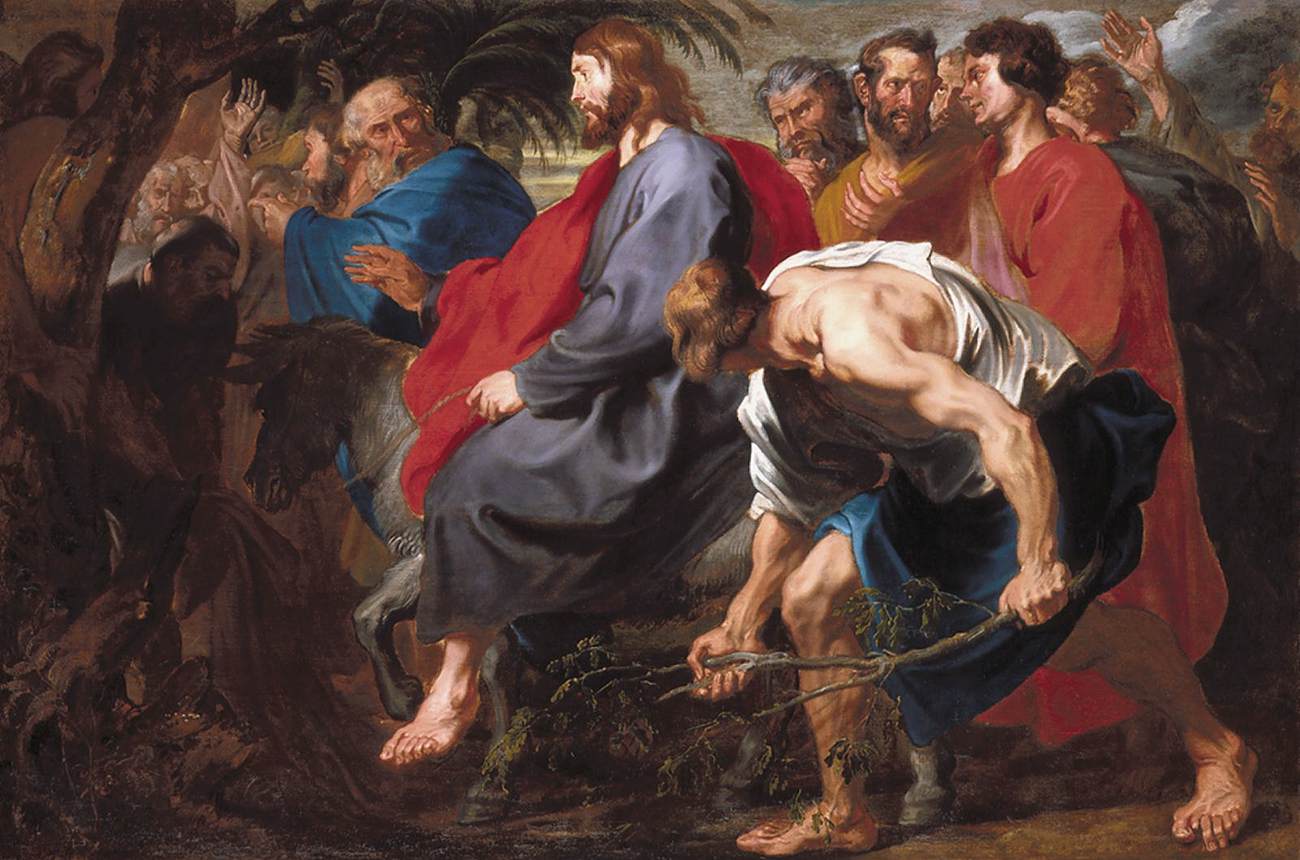Sir Anthony van Dyck: A Significant and Prolific Painter
 Monday, April 11, 2022 at 8:00AM
Monday, April 11, 2022 at 8:00AM  Sir Anthony van Dyck - Entry of Christ into Jerusalem - c. 1617 - Oil on canvas, 151 x 229 cm - Museum of Art, Indianapolis (click photo for larger image)Sir Anthony van Dyck (1599-1641) was a Flemish painter who was one of the most important and prolific portraitists of the 17th century. He is also considered to be one of the most brilliant colorists in the history of art.
Sir Anthony van Dyck - Entry of Christ into Jerusalem - c. 1617 - Oil on canvas, 151 x 229 cm - Museum of Art, Indianapolis (click photo for larger image)Sir Anthony van Dyck (1599-1641) was a Flemish painter who was one of the most important and prolific portraitists of the 17th century. He is also considered to be one of the most brilliant colorists in the history of art.
Van Dyck was the son of a rich silk merchant, and his precocious artistic talent was already obvious at age 11, when he was apprenticed to a Flemish historical painter. He was admitted to the Antwerp guild of painters in 1618, before his 19th birthday, and spent the next two years as a member of Peter Paul Ruben’s workshop in Antwerp. Van Dyck's work during this period is in the lush, exuberant style of Rubens, and several paintings attributed to Rubens have since been ascribed to Van Dyck.
From 1620 to 1627 Van Dyck traveled in Italy, where he was in great demand as a portraitist and where he developed his maturing style. He toned down the Flemish robustness of his early work to concentrate on a more dignified, elegant manner. In his portraits of Italian aristocrats—men on prancing horses, ladies in black gowns—he created idealized figures with proud, erect stances, slender bodies, and the famous expressive "Van Dyck hands". Influenced by the great Venetian painters, no other painter of the age surpassed Van Dyck at portraying the shimmering whites of satin, the smooth blues of silk, or the rich crimsons of velvet. He was the quintessential painter of the aristocracy, and was particularly successful in Genoa. There he showed himself capable of creating brilliantly accurate likenesses of his subjects, while he also developed a repertoire of portrait types that served him well in his later work at the court of Charles I of England.
Back in Antwerp from 1627 to 1632, Van Dyck worked as a portraitist and a painter of church pictures. In this period he began to make small monochrome portraits in oil and drawings in chalk of princes, soldiers, scholars, art patrons, and, especially, of fellow artists, with the view of having them engraved and published.
In 1632 he settled in London as chief court painter to King Charles I, who knighted him shortly after his arrival. Van Dyck painted most of the English aristocracy of the time, and his style became lighter and more luminous, with thinner paint and more sparkling highlights in gold and silver. At the same time, his portraits occasionally showed a certain hastiness or superficiality as he hurried to satisfy his flood of commissions.
Van Dyck was one of the most influential 17th-century painters. He set a new style for Flemish art and founded the English school of painting; the portraitists Sir Joshua Reynolds and Thomas Gainsborough of that school were his artistic heirs.
The work featured here is a youthful work of the artist painted when he was a member of Peter Paul Rubens's workshop. The picture was executed in the style of Rubens.
(Excerpted from the Web Gallery of Art)






Reader Comments